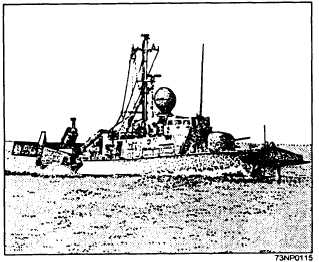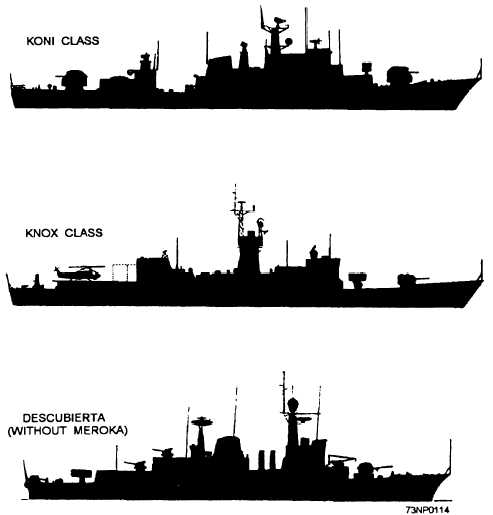Figure 13-16.—Classes of frigates.
Figure 13-17.—Pegasus-class hydrofoil.
self-defense and rely mainly on combatants for
protection. They are constructed in various sizes and
configurations unique to their role. Many auxiliary
ships, especially those used for replenishment and
repair, have cranes and booms on deck that are used
for transferring equipment, supplies, and fuel to the
fleet.
SHIP IDENTIFICATION
CONCLUSION
The need for rapid and accurate identification of
Soviet ships is important with the number of Soviet
naval sightings throughout the world. Figure 13-19
shows the silhouettes of the most commonly sighted
Soviet warships. To help you translate Russian ships’
names, figure 13-20 is a transliteration table to convert
the Russian alphabet into the English alphabet. You
must familiarize yourself with both the silhouettes and
the transliteration table to be able to identify, on sight,
ships of the Soviet Navy.
13-10



